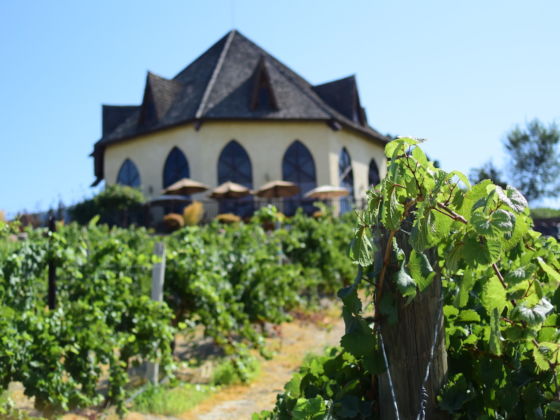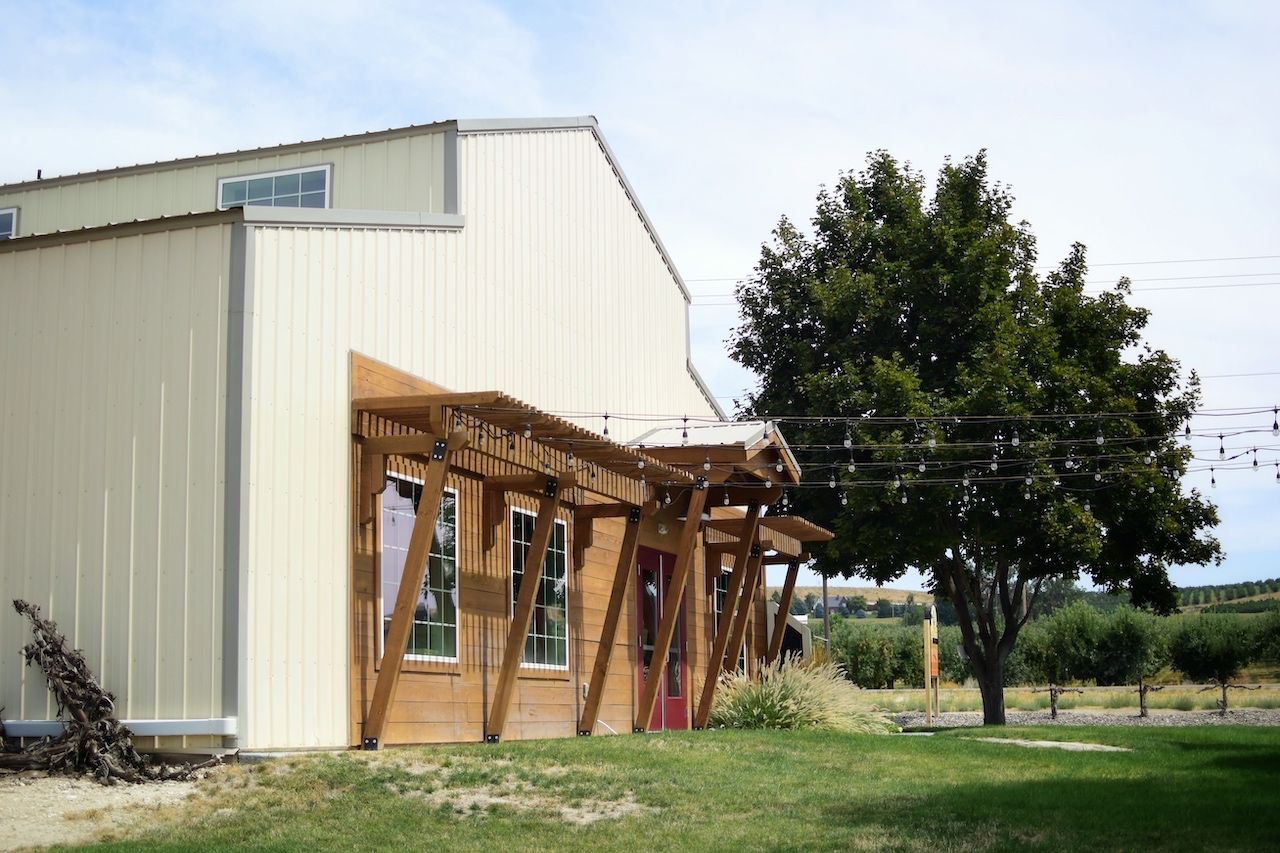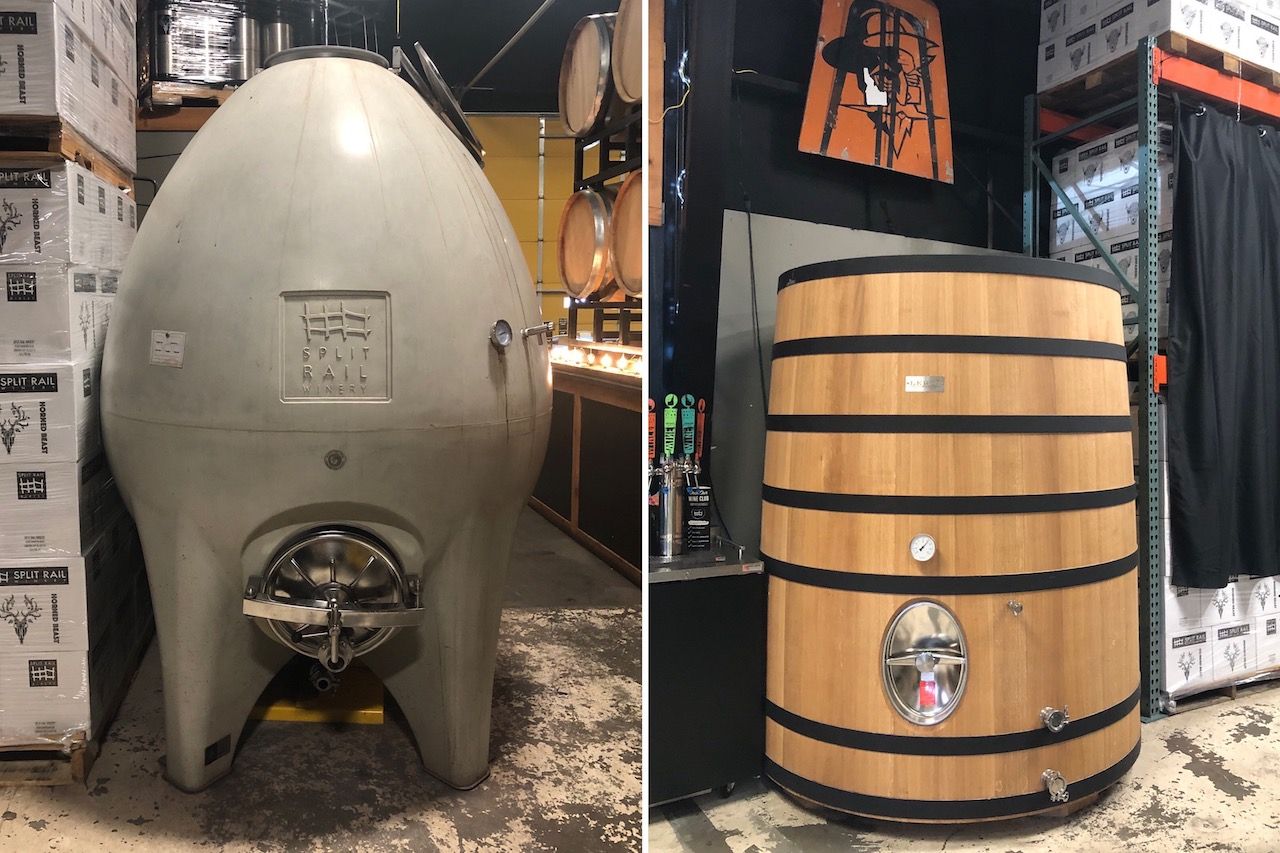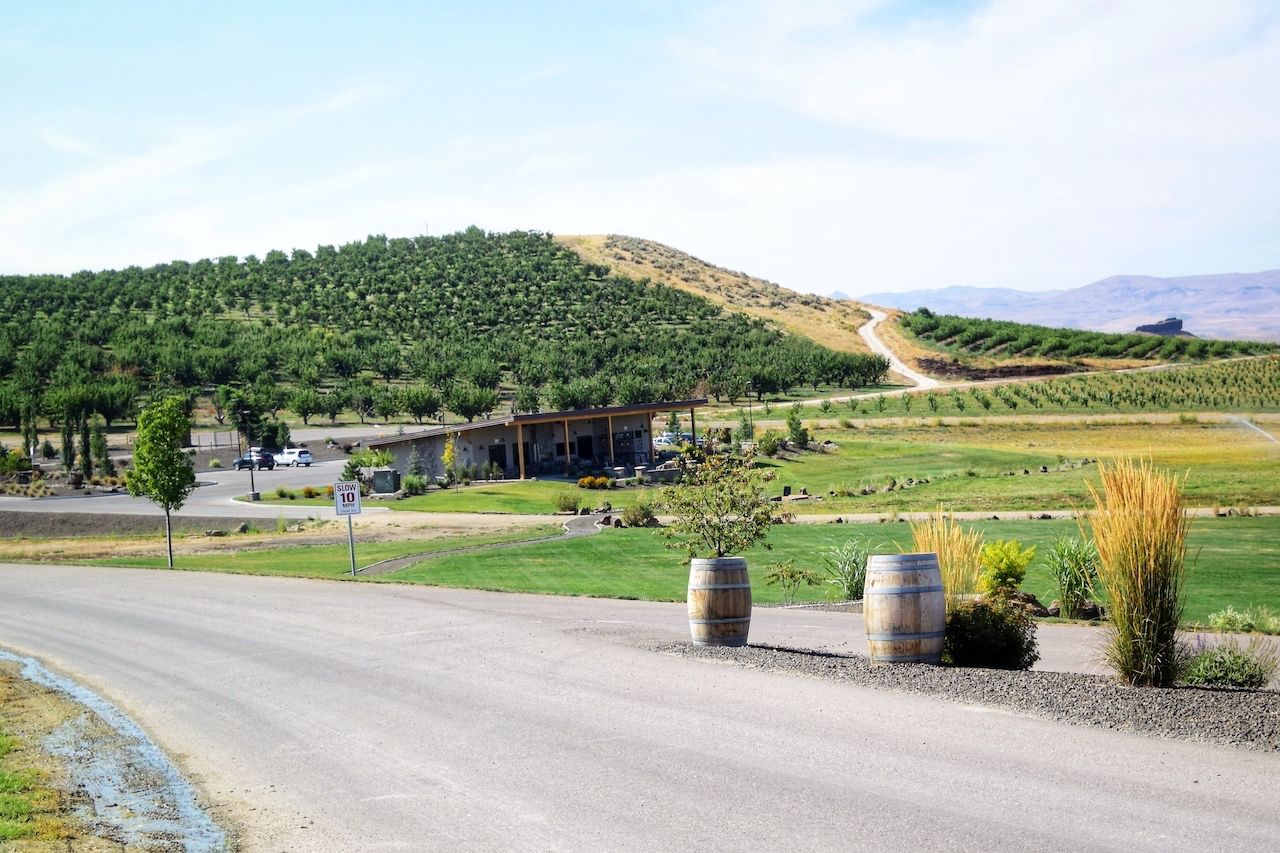When I told a family friend that I was going to Idaho to tour the state’s wine regions, he responded with a snarky quip: “I didn’t know they make potato wine.” After a weekend filled with tastings at nine wineries, I never did find that potato wine. I did, however, get a taste of why local winemakers swear that one of the best burgeoning wine regions in America is adjacent to the country’s potato basket.


Idaho Winemakers Are Working to Create America’s Next Great Wine Region
Like many wine regions, Idaho’s wineries are best seen firsthand. It’s closing in on 6:00 PM, and Telaya Wine Co. in Garden City, Idaho, is quickly filling up for Thirsty Thursday. Earl Sullivan, the owner and winemaker at Telaya, points me toward a map of the microclimates and soil types of the Snake River Valley, where he sources some of his grapes. If you squint, it’s not all that dissimilar to maps winemakers have shown me in France’s Loire Valley or Northern California’s Russian River Valley.
Sullivan pulled out bottles of varietal grenache blanc, petite verdot, and mourvedre wines. He poured a glass of Turas, Telaya’s signature blend using grapes from both Washington and Idaho. Like many new wine regions in the United States, Idaho isn’t defined by a single grape. But unlike many new wine regions in the US, the experimentation here is leading to interesting, balanced, and, most importantly, delicious wine.
A new wine region, sort of

Photo: Nickolaus Hines
While Idaho’s modern wine industry is new, it’d be a slap in the face to early American history to say it lacks lineage. The first wine grapes were planted by French and German immigrants in Lewiston, Idaho, in 1864, which were also the first in the northwestern part of the country. Idaho’s wines were sent around the country prior to Prohibition, but all that ended when the state outlawed alcohol in 1916. Prohibition played out here like it played out elsewhere: Vines were torn out, people with winemaking know-how abandoned the area, and the desire for local wine dried up.
It wasn’t until 1970 that wine grapes were once again planted in Idaho. The focus this time was on the Snake River Valley in the south. In 1976, Ste. Chappelle, Idaho’s largest winery to date, opened. The Idaho Grape Growers and Wine Producers Commission began operations in 1984. By 2002, there were 11 wineries across Idaho.
Then, in 2007, the state got its first official American Viticultural Area (AVA): Snake River Valley. It sits near a similar latitude to France’s Rhone Valley and Spain’s Rioja, and at 8,000 square miles, Snake River Valley is as large as Idaho’s wine-making ambitions. Today, there are three AVAs in the state, more than 55 wineries, and endless potential. Idaho’s modern winemakers envision a time when they’ll pass more rows of grapevines than corn or potatoes.
That dream is still far off in the future, though. For now, visiting wine enthusiasts should set their sights on the Sunnyslope wine region, where you’ll find Williamson Orchards and Vineyards.

Photo: Nickolaus Hines
Williamson started in 1909 as a homestead, which is land granted by the government in exchange for developing agriculture. Initially, the business cultivated fruit trees, which remained the most vital part of the family business for the first three generations. The fourth and current generation running the business has seen a shifting focus to one crop in particular: wine grapes.
Williamson is the grape basket for wine brands in Idaho (though fields of grain are still the first thing you see when you approach the farm). Williamson’s first vineyards were planted in 1998 when Ste. Chappelle needed more grapes. The family grew cabernet sauvignon, syrah, and riesling for the brand, and decided to bring in a winemaker to make wine with the leftover grapes. The company’s first vintage of cabernet sauvignon, in 2001, won a gold medal at Idaho’s annual wine competition.
Williamson Orchards and Vineyards has focused more and more on grapes since then. Beverly Williamson, who runs the farm with her brother Mike and cousin Patrick, ran the family fruit stand for years. Wine eventually eclipsed the fruit business, and they closed the stand, which was “like a death in the family for me,” she says. But, she adds, “you have to change with the times to adapt so you can stay in business.”
And staying in business these days means making world-class wine.
A wine region on the way to other wine regions

Photo: Nickolaus Hines
Idaho is a relatively remote state in terms of population distribution. That’s both a benefit and a downside. The latter is obvious: Fewer people means less business. But for people in the northern part of the US, Idaho’s wine country is perfectly placed as a middle point on the way to other wine regions in the Pacific Northwest. In that way, Idaho wineries extend the wine drinking and buying experience for people who already have a clear interest in wine.
Sunnyslope’s wineries take full advantage of this drive-through positioning. It’s easy to stop at five to six wineries without driving more than 15 minutes between each one. With everything so close, it’s like a big community, says Martin Fujishin, co-owner and winemaker at Fujishin.
Fujishin gained recognition for its wine in 2017 with a couple of awards, but it was also one of the first wineries in the area to build out a tasting room that’s “elevated like other wine regions,” Fujishin says. Today, it’s one of only a few in the area to offer free tastings seven days a week. The majority of customers fall into one of two categories: people on their way to the Oregon coast or locals buying bottles and filling growlers of wine for $14. Around 85 percent of sales comes from the tasting room. Fujishin doesn’t necessarily expect this to always be the case, though.
“[We’ve been] trying to figure out in the last year and a half what the future of Idaho wine is,” Fujishin says.
Experimentation at the heart of Idaho wine

Photo: Nickolaus Hines
Walking into Split Rail, an urban garage winery in Garden City, is like walking into a wine nerd’s experimental dream. It’s located in an old car body shop with street art on the outside walls. Inside, you’ll find wines like a pet nat rosé (a naturally sparkling wine made in a similar method to Champagne) and a chardonnay mixed with a golden ale made with Brettanomyces yeast from a local brewery. There’s a foeder (a large wooden aging and blending vat) next to the register. A concrete egg lies in the back, currently aging red wine (grenache at the time of my visit), and directly across is a chest-tall clay pot called an amphora used for aging wines as it’s commonly done in the country of Georgia. Acacia wood barrels sit among the racks of American and French oak barrels.
Split Rail started in a building shared with the wineries Telaya and Cinder but moved to its own space a short walk away. Its wine selections are a balance of what people in the region love, like a grenache-syrah-mourvedre (GSM) blend, and wines designed for wine geeks, like anything aged in the amphora and concrete egg.
Idaho’s wineries are experimental in tasting room style, as well. At nearby Cinder, the expansive warehouse has a similar vibe to a modern brewery with a large back bar, couches, and a concrete floor that children can draw on with chalk. The environmentally minded pack-in, pack-out culture of leaving zero waste is strong in outdoorsy Idaho, and it’s especially obvious at Cinder. The wine is served on tap, with options to fill growlers or refillable 750-milliliter bottles.
Cinder has been in the building since 2008. The winery attracts locals, but also people from Washington and those on their way to Washington, Oregon, and California from the Midwest, says assistant winemaker Hailey Alexander. The space is industrial without being impersonal, and it’s an easy rideshare from downtown Boise.
Out in Sunnyslope, Sawtooth is pushing the envelope with a wide range of canned wines available on site and in grocery stores. Winemaker Meredith Smith has been continuously experimenting with new varieties and formats, and she regularly travels to places like Rioja, Burgundy, and the Rhone valley for inspiration. Smith says they get as close to natural winemaking as possible in the sometimes challenging conditions in the region, but she’s always looking for what’s next. Sawtooth currently works with 22 varietals, and there’s always room to take a chance on more.
Notable wines without the notable name

Photo: Nickolaus Hines
Being local matters in Idaho. Hat Ranch winery describes its location near Caldwell, Idaho, as “pretty isolated,” yet it still manages to draw visitors from across the state. In Boise, the number of locals is increasing in a city that’s one of the fastest-growing metropolitan areas in the US. These new people, too, are interested in locally produced goods.
Beverly Williamson has seen it firsthand on her family’s farm. She’s found there’s never a single reason for success on a farm, and that goes for wine, too. “I’d like to think it’s not just because of all the people moving to Idaho,” Williamson says, laughing. “I’d like to think it’s also because of [the winemakers].”
Idaho is gaining recognition at a time when regional wine is booming. You can now visit a winery in every state, and classic wineries in Napa that helped put the United States on the global wine map are still just as much a draw as the upstarts.
In Idaho, however, things feel fast and loose. Few Idaho winemakers hang their hat entirely on the typical money makers like chardonnay and cabernet sauvignon. There’s always room for something new here, both from a grower perspective and a winemaker perspective.
When Smith started working with Sawtooth, and then Ste. Chappelle, she quickly learned how to approach Idaho wine: “Not to say Idaho does ‘this wine,’” Smith says. “We work with 19 varieties grown just in Idaho.”
At Telaya, Sullivan agrees, adding that he’s “always looking for some absurd wines because I’ve tasted enough cabernet sauvignon.”
Speaking with growers and producers, it’s clear that varietal experimentation is common practice across the board. For reds, favorites include grenache, syrah, petit verdot, and tempranillo. For whites, there’s viognier and gewurztraminer.
“I’ll drive through and be like that could be a great vineyard, that could be a great vineyard. There’s so much potential, we’re just getting started,” Cinder’s Alexander says. “Communication with vineyards and growers makes us confident enough to say that Snake River Valley is the next great American wine region.”
At Telaya on Thirsty Thursday, people quickly filter in as Sullivan’s wife and co-owner of Telaya, Carrie, shows me around while Earl leads a tasting in the back for an assisted living group home.
More than 85 percent of sales come from the winery, Sullivan says. Once people come, it’s easy to tempt them back. “The biggest success is having that ‘aha’ moment with people who don’t know Idaho wine,” Sullivan says.
When you go

Photo: Nickolaus Hines
Where to stay: Make your basecamp in Boise. Hotel 43 is central and right next door to Chandlers Steakhouse, which is a fine-dining restaurant that promotes local wine alongside international selections. Thanks in part to being a college town, Airbnbs are easy to find — though prepare for higher prices and fewer availabilities on Saturdays in the fall when the hometown college, Boise State, plays football.
Where to drink near the city: Find Coiled Wines’ downtown tasting room for wines by the glass, bottle, and wine slushies. Boise’s main urban winery district is in nearby Garden City. Don’t miss Telaya right along the river, and make a point to stop by Cinder and Split Rail, which are both a five-minute walk from each other.
Where to drink near the vineyards: Drink closer to the vineyards in Sunnyslope, which is less than an hour’s drive from Boise. Notable stops include Sawtooth and Hat Ranch, along with Ste. Chappelle, which has a gorgeous tasting room and is just a short walk through the vines from Sawtooth. Along the highway, stop by Fujishin and Williamson Orchards and Vineyards for tastings and bottles to take home.